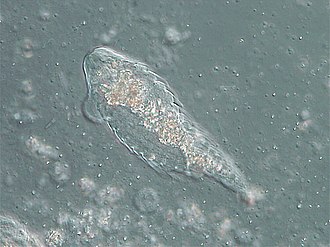Overview
The Challenging Part
The most challenging requirement of this honor is probably this:
7. Amoebic dysentery and giardiasis (beaver fever) are gastrointestinal illnesses by similar protozoa. State three differences that distinguish them and how to prevent these illnesses.
[[AY Honors/Protozoa/Requirements|Tab Name/Printable Version]]
1. What are the main characteristics of protozoa that put them in the Protista kingdom? What are the similarities and differences in relation to other protists (algae)?
2. Be able to identify by pictures or photos five common protozoa, giving their scientific names.
3. Give the classification of protozoa, giving their distinctive characteristics and at least one example of each group and its importance.
4. What are pseudopods? What is their purpose?
5. How do protozoa reproduce? How can they alter their genetic traits and be more resistant to aggressors?
6. How do protozoa feed and breathe?
7. Amoebic dysentery and giardiasis (beaver fever) are gastrointestinal illnesses by similar protozoa. State three differences that distinguish them and how to prevent these illnesses.
8. Talk about Leishmaniasis and how dogs are related to the spread of this protozoan disease.
9. Malaria is a disease that causes many deaths in the Amazon region and in Africa. Describe how it is contagious, what are its main symptoms and how this disease can be prevented and treated.
10. Draw the cycle of Chagas disease (American trypanosomiasis) and explain each stage. What does it do to a human being? How is it transmitted? How can it be prevented? Is there a treatment?
Printable Answer Key Tab Name/Edit Answer Key
1
All protists are eukaryotic -- meaning they have a cell nucleus that stores their DNA -- single-celled organisms. Protists are often considered animal-like or plant-like because they behave similarly to multi-cellular organisms. Protozoa is another name for animal-like protists.
Like all protists, protozoa are single-celled organisms with a cell nucleus. Some have more than one nucleus. Protozoa are heterotrophs, which means they can not make their own food, but instead must ingest other organisms for energy. Most reproduce asexually through mitosis, which involves the splitting of their cell into two identical copies. Some reproduce through meiosis, which is sexual reproduction. Seven phyla -- subdivisions of a kingdom -- of protists are protozoa.
2
3
Flagellata (flagellated)
A flagellate is a cell or organism with one or more whip-like appendages called flagella. The word flagellate also describes a particular construction (or level of organization) characteristic of many prokaryotes and eukaryotes and their means of motion.
Ciliophora (ciliated)
Amoeba (phagocytic)
Sporozoans (spore-forming)
4
A pseudopod is a temporary cytoplasm-filled projection of a eukaryotic cell membrane or a unicellular protist. Pseudopods may be used for motility, or for ingesting nutrients or other particulate matter.
5
6
7
8
9
10
References
Content on this wiki is generated by people like you, and no one has created a lesson plan for this honor yet. You could do that and make the world a better place.
See AY Honors/Model Lesson Plan if you need ideas for creating one.

